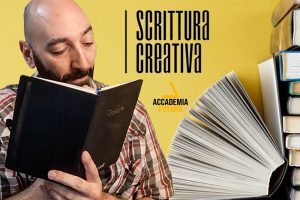Miur: Rientriamo a Scuola

#RientriamoAScuola, sui social del Ministero il diario virtuale del rientro in classe: parola agli studenti
L’emozione del primo giorno di scuola raccontata attraverso le voci dei protagonisti, le studentesse e gli studenti. Da questo pomeriggio e fino a domani, giorno della cerimonia ufficiale di inaugurazione del nuovo anno scolastico che si terrà a Vo’, alla presenza del Presidente della Repubblica, Sergio Mattarella, e della Ministra dell’Istruzione, Lucia Azzolina, sul profilo Instagram del Ministero dell’Istruzione, la parola passa alle ragazze e ai ragazzi che racconteranno ‘il giorno prima’, le 24 ore che precedono il rientro in classe.
Un diario social realizzato tramite video stories. Un viaggio virtuale e simbolico che ripercorrerà il ricordo delle lezioni fatte a casa con la didattica a distanza, l’esperienza della separazione da scuola, il racconto dell’ultimo giorno prima del rientro, la preparazione dello zaino, il ripasso delle nuove regole da rispettare per tornare in sicurezza. E poi un bilancio del primo giorno, dell’incontro con i professori e i compagni.
Protagonisti del racconto in diretta sulla pagina Instagram del MI saranno Matteo e Gaia, due studenti iscritti all’Istituto “Masotto” di Noventa Vicentina, non lontano da Vo’.
Durante l’emergenza, studentesse e studenti hanno sempre trovato sui Social del Ministero dell’Istruzione materiali e informazioni per rispondere ai loro dubbi, chiarimenti sui provvedimenti presi dal Governo, informazioni ufficiali. Ma anche una raccolta delle esperienze delle loro scuole, di come hanno reagito all’emergenza, dei progetti di didattica a distanza. Già a giugno, durante l’inedita #Maturità2020, il Ministero ha dato spazio su Instagram al racconto di una studentessa di Codogno.
#RientriamoAScuola, l’hashtag scelto dal Ministero per accompagnare il racconto della ripresa.
Il link al canale Instagram del Ministero dell’Istruzione:
It has survived not only five centuries, but also the leap into electronic typesetting, remaining essentially unchanged. It was popularised in the 1960s with the release of Letraset sheets containing Lorem Ipsum passages, and more recently with desktop publishing software like Aldus PageMaker including versions of Lorem Ipsum.
It is a long established fact that a reader will be distracted by the readable content of a page when looking at its layout. The point of using Lorem Ipsum is that it has a more-or-less normal distribution of letters, as opposed to using ‘Content here, content here’, making it look like readable English.
Many desktop publishing packages and web page editors now use Lorem Ipsum as their default model text, and a search for ‘lorem ipsum’ will uncover many web sites still in their infancy. Various versions have evolved over the years, sometimes by accident, sometimes on purpose (injected humour and the like).
There are many variations of passages of Lorem Ipsum available, but the majority have suffered alteration in some form, by injected humour, or randomised words which don’t look even slightly believable.
If you are going to use a passage of Lorem Ipsum, you need to be sure there isn’t anything embarrassing hidden in the middle of text. All the Lorem Ipsum generators on the Internet tend to repeat predefined chunks as necessary, making this the first true generator on the Internet.
It uses a dictionary of over 200 Latin words, combined with a handful of model sentence structures, to generate Lorem Ipsum which looks reasonable. The generated Lorem Ipsum is therefore always free from repetition, injected humour, or non-characteristic words etc.
The standard chunk of Lorem Ipsum used since the 1500s is reproduced below for those interested. Sections 1.10.32 and 1.10.33 from “de Finibus Bonorum et Malorum” by Cicero are also reproduced in their exact original form, accompanied by English versions from the 1914 translation by H. Rackham.



